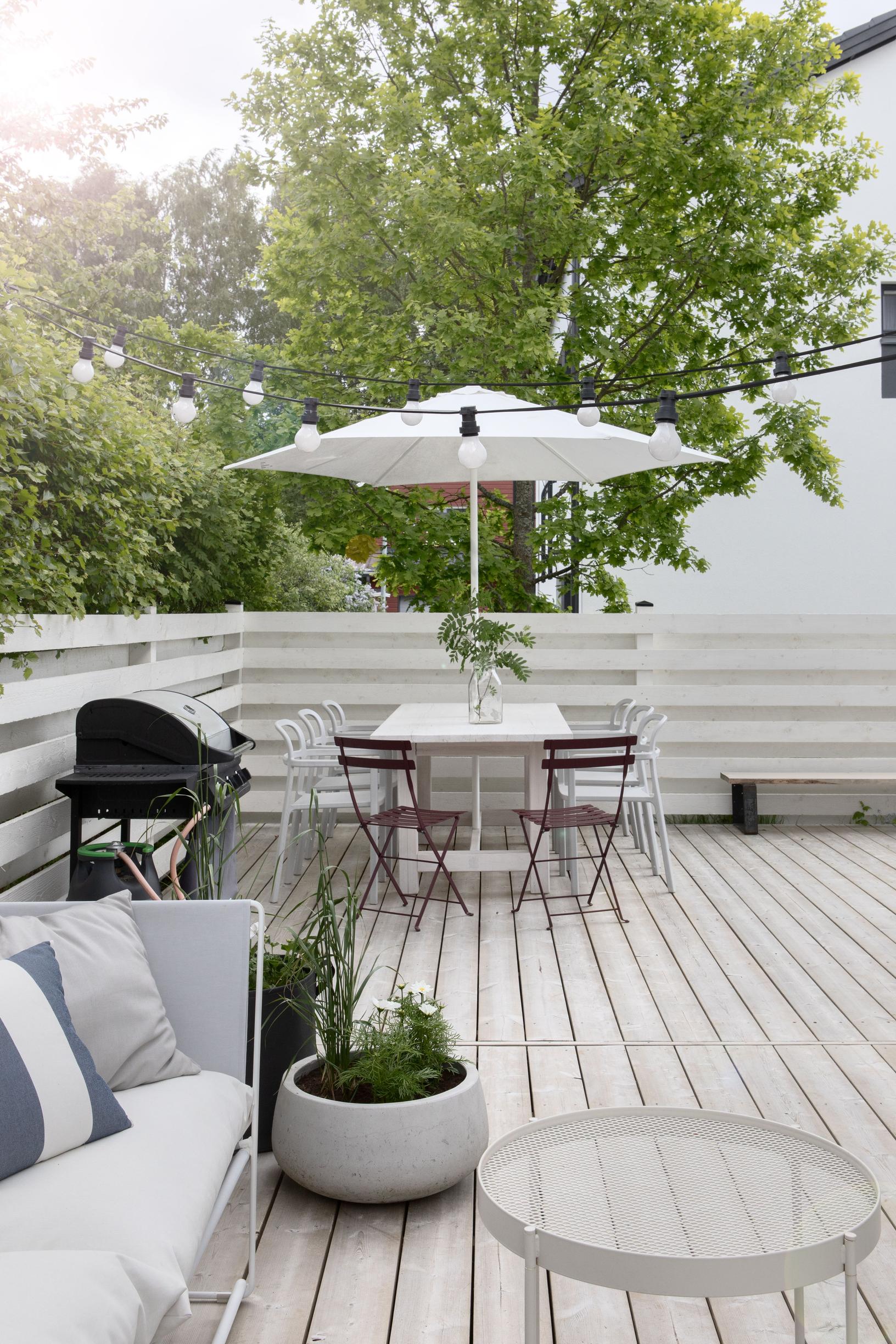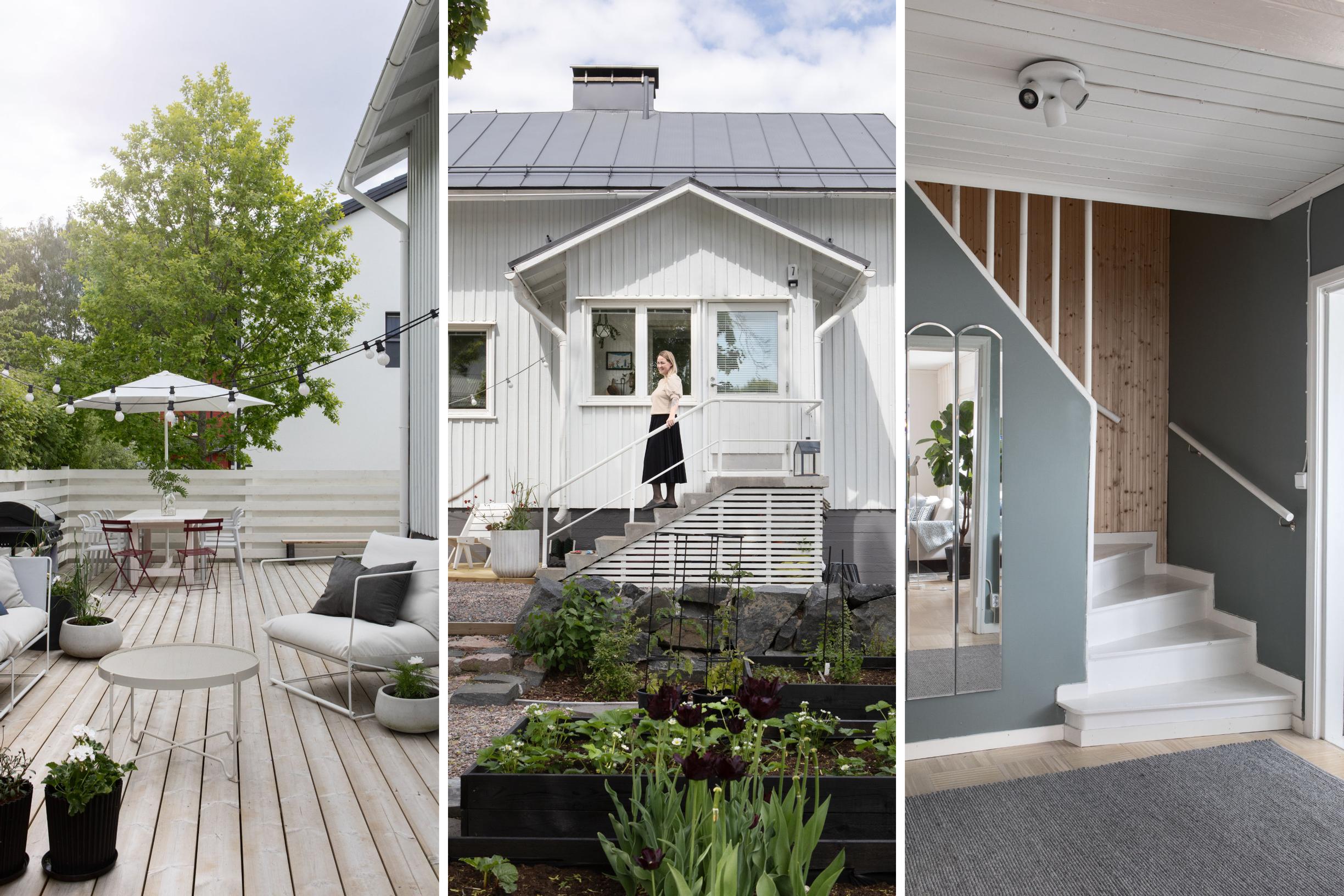
“We wanted a house in its original condition that we could renovate ourselves”—Outi and Mikko traded their apartment for a charming 1950s home
“Living in an apartment, we always had to leave if we wanted to be outside.” Outi Tuhkanen and Mikko Montén became only the second owners of a classic Finnish wooden house from 1953. They renovated every corner, and the yard’s wasted space turned into a “secret” spot for cooling off.
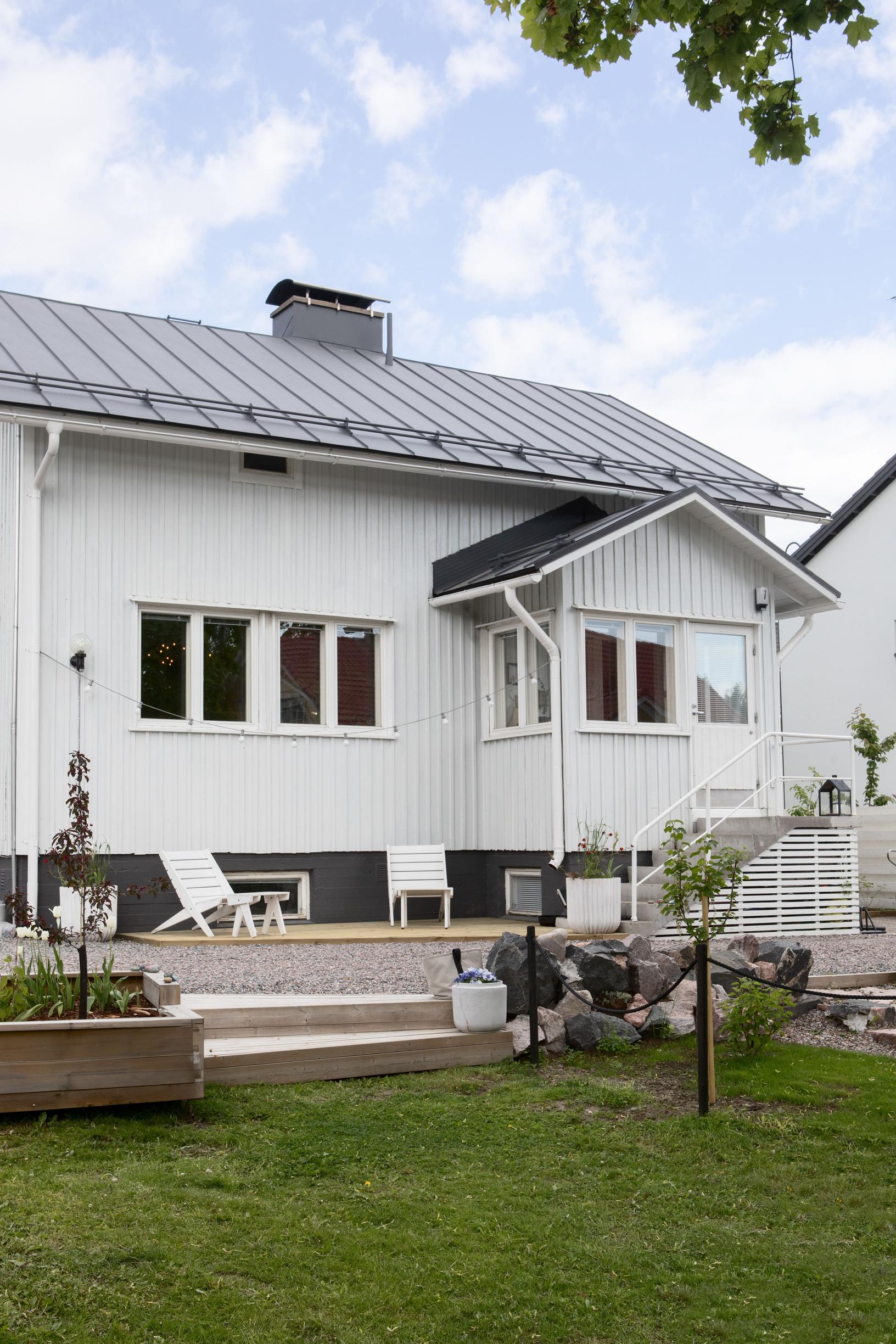
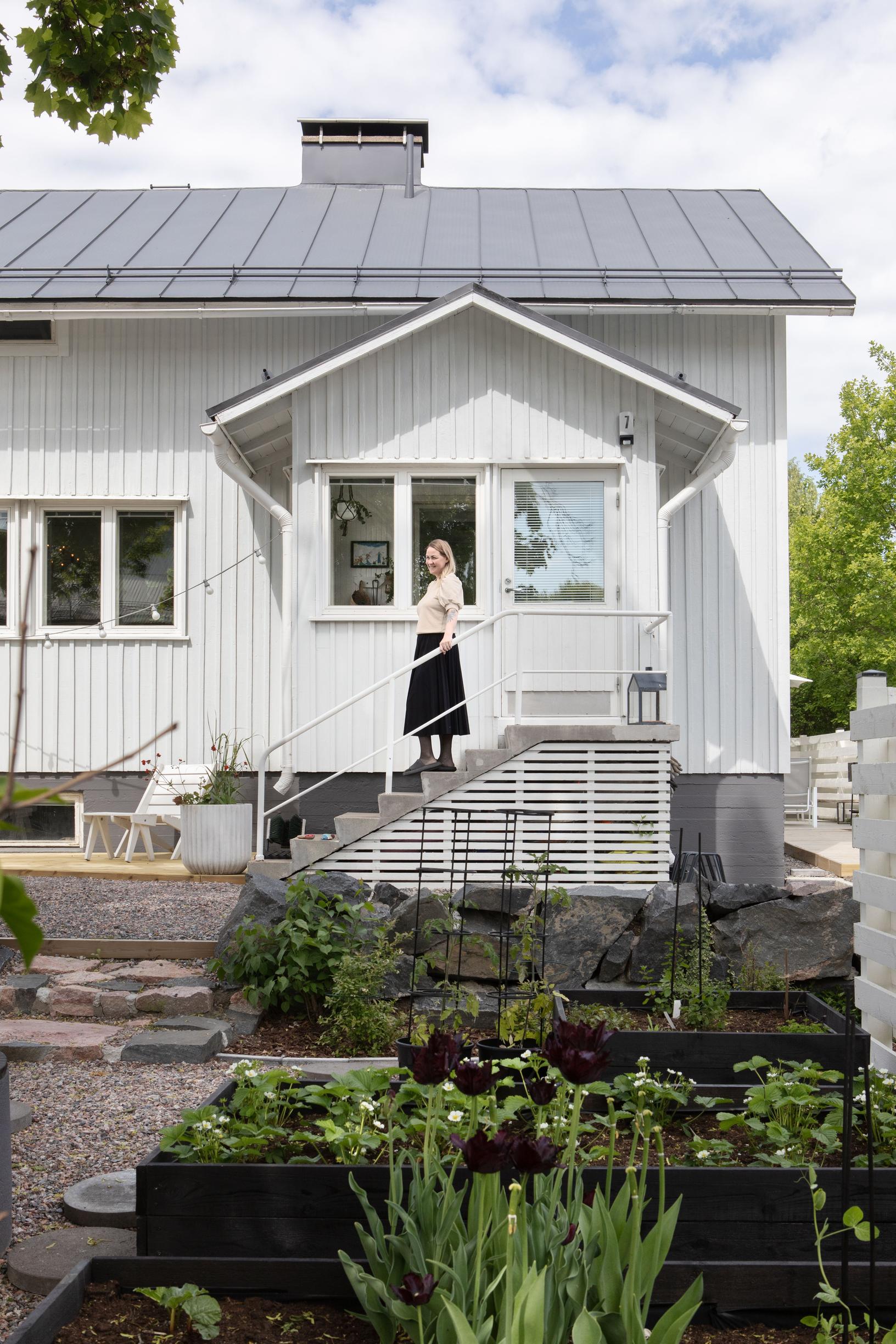
Residents Outi Tuhkanen, Mikko Montén and children Sanni and Viivi.
Home A wooden house built in 1953 in Helsinki’s Malmi district. The house is 120 square meters in size and is heated with electric-powered water-circulating radiators.
Here is what it looked like inside when the renovation began:
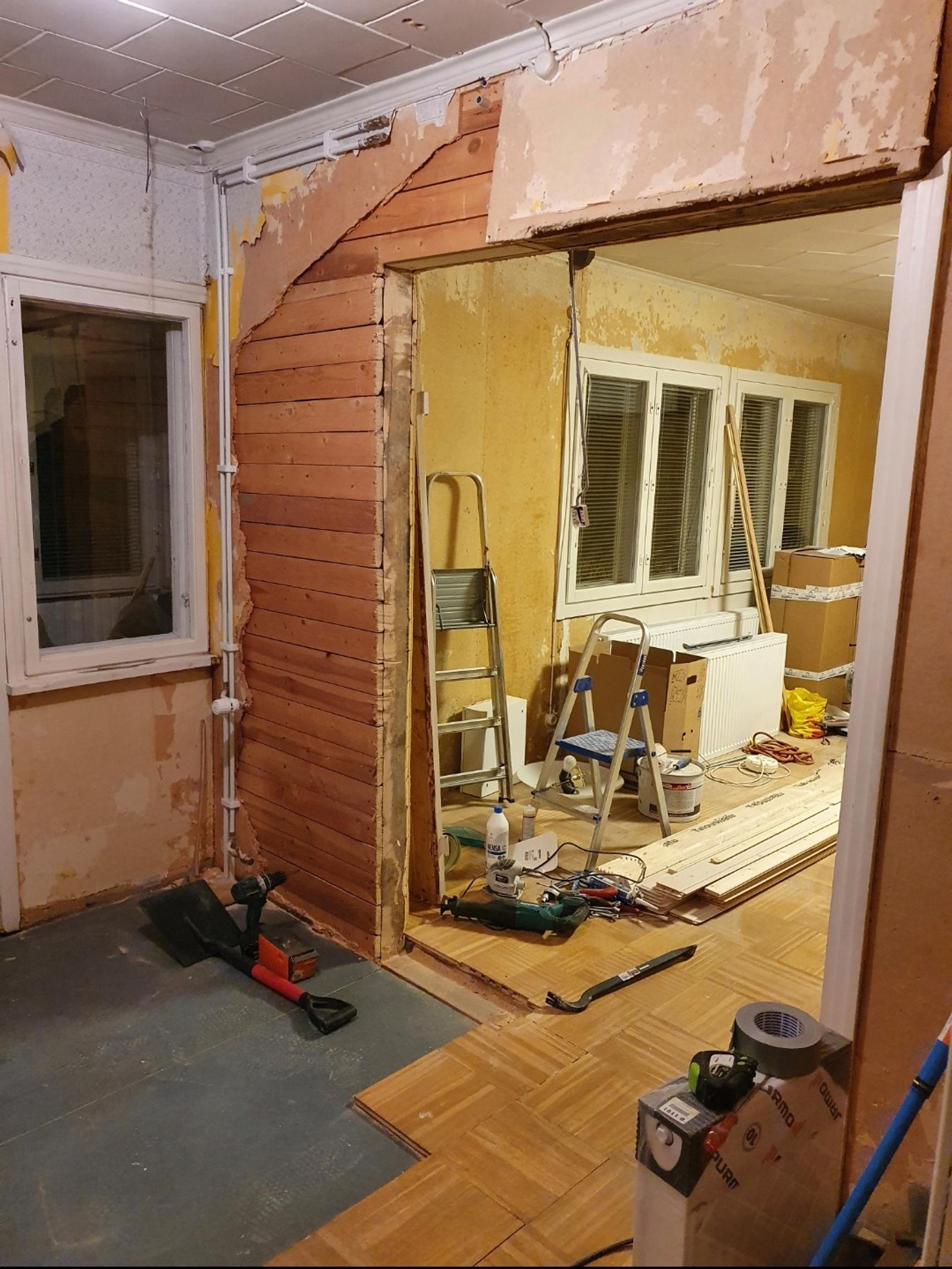
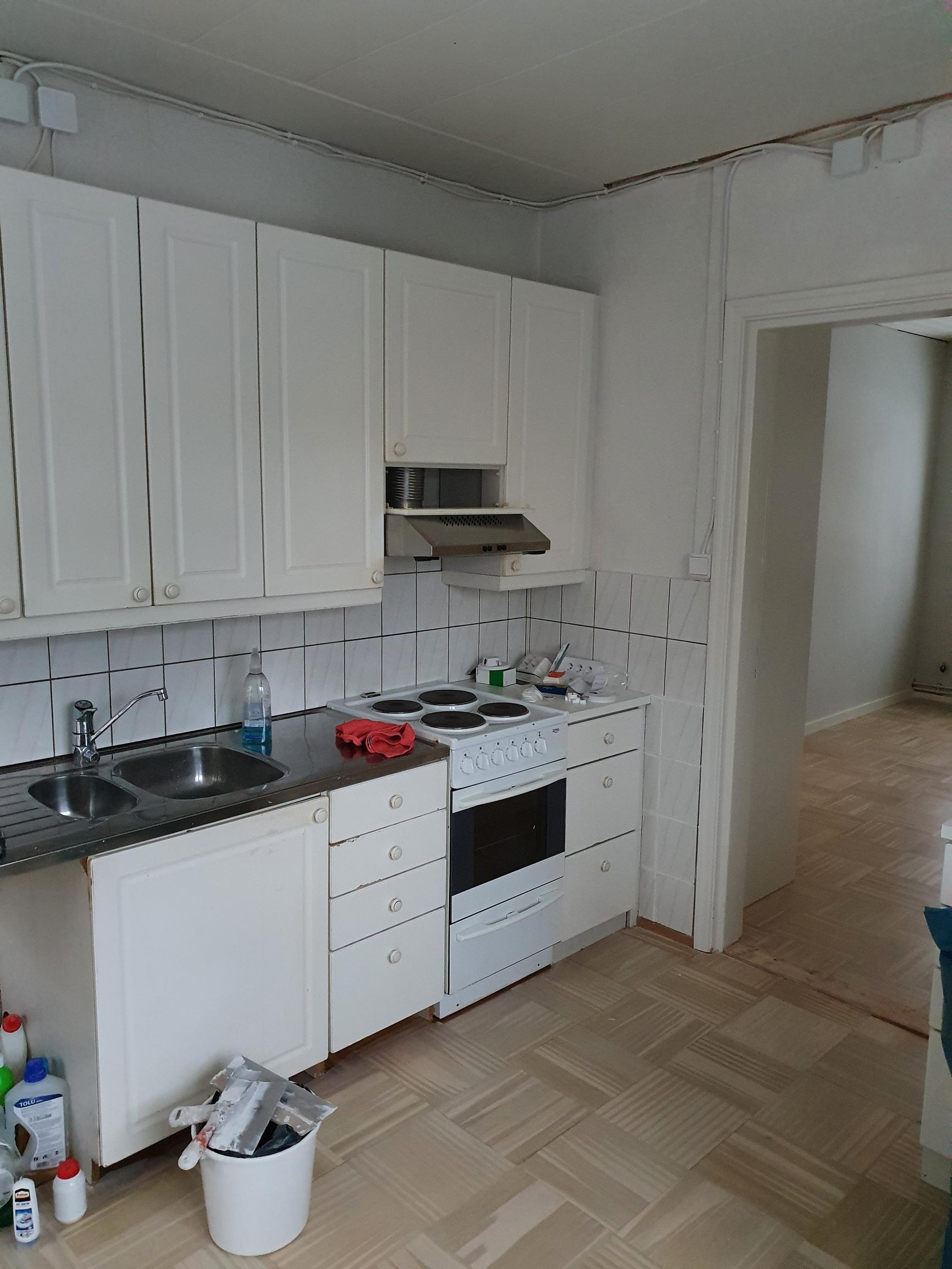
You can only see a bit of the eaves of the neighbor’s house if you really crane your neck from the terrace chair. Outi Tuhkanen sits on an outdoor sofa, glancing around.
“Originally, there was a three-meter strip of lawn and a hedge along the property line here—basically wasted space,” Outi explains.
A thick, lush hawthorn hedge that’s decades old shields the seating area. Thanks to the new terrace, the narrow space has become an asset. Between the house and this wall of green, it feels like the world’s worries don’t exist.
“We sit out here on summer evenings after the sauna, cooling off in privacy,” Outi says with a smile.
In a densely built single-family housing area in northern Helsinki, having your own “secret” corner is an even greater treasure.
“This plot has also been subdivided, which made room for another house,” she says.
Let’s save the front yard tour for another time and head indoors.
“Among other things, we’ve added new planter boxes and raised beds in the front yard,” Outi calls out as she heads up the house’s concrete outdoor steps.
The porch gets just the right amount of sunshine.
“The porch is one of the few areas in the house that only needed a coat of paint,” Outi says. The family’s cat, Rokki, darts behind the inner door.
“Our other cat, Turpo, is often hiding. Just like right now.”
Outi and Mikko purchased their single-family home, built in 1953, a bit over four years ago. Until then, the four-person family had lived in an apartment building.
“When we lived in an apartment building, we always had to leave if we wanted to be outside. We started thinking about having our own house and yard,” Outi says.
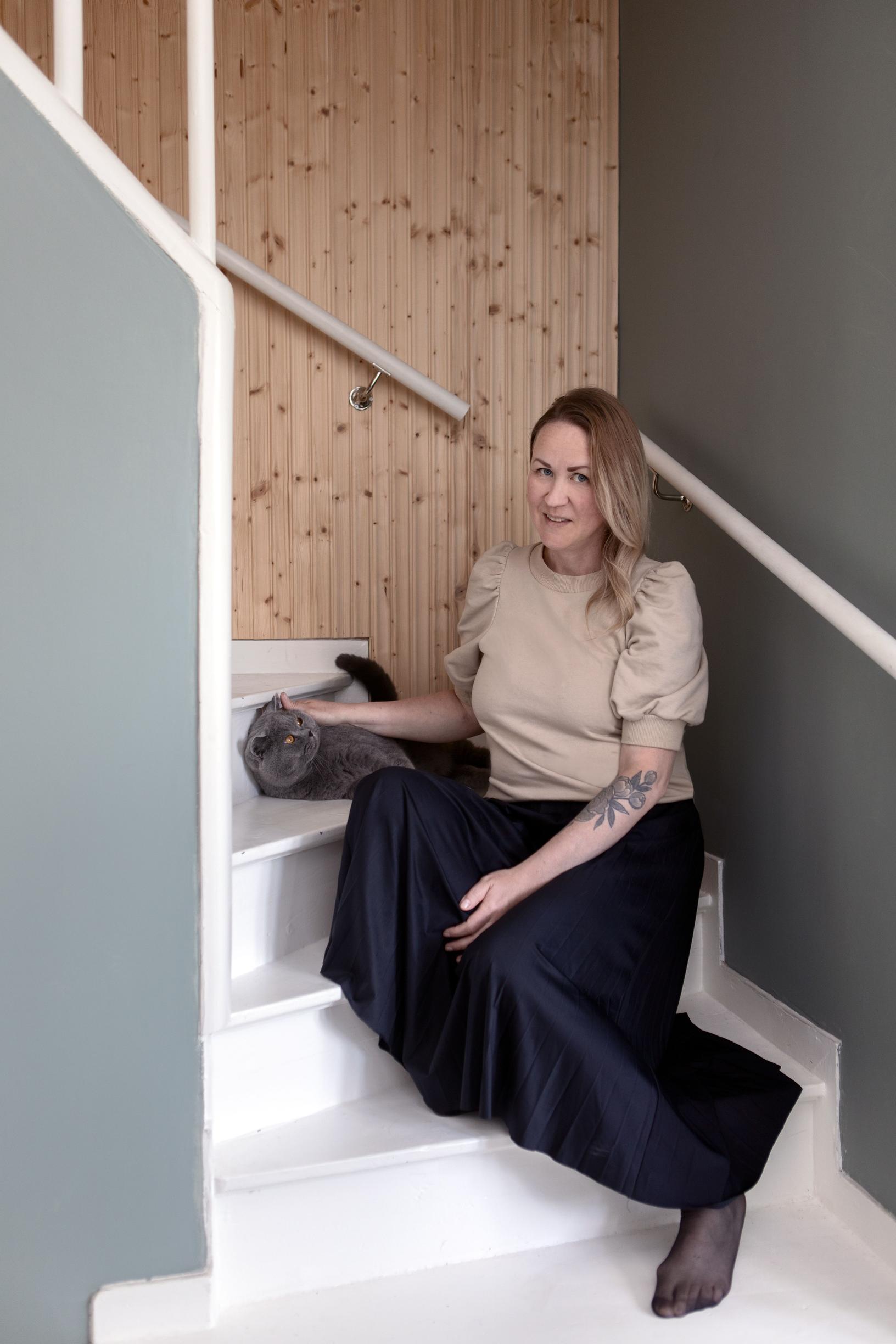
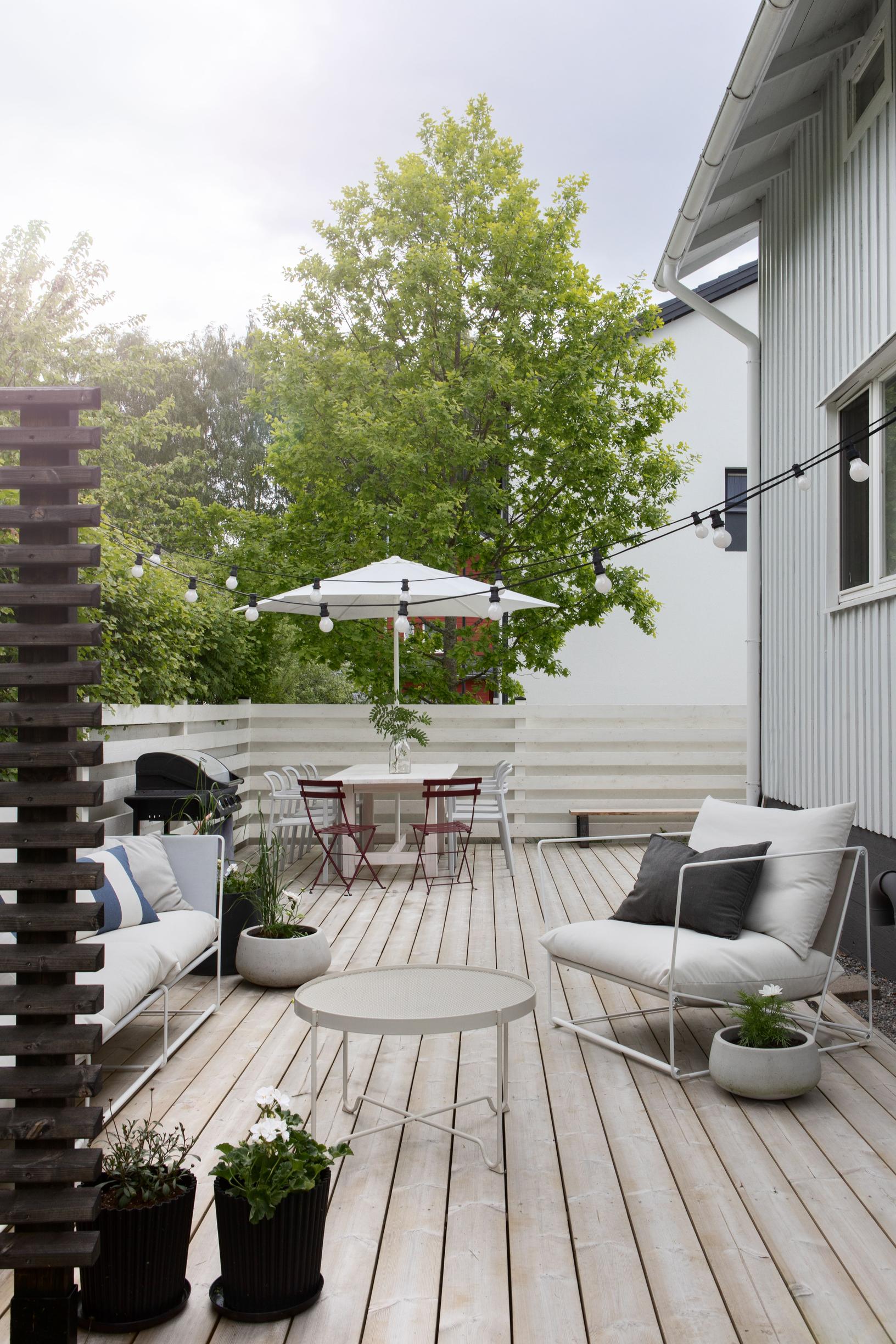
The home’s color scheme is minimal, and the atmosphere is bright.
“I enjoy these colors. Our previous home also had the same light color palette,” Outi explains.
Before getting here, they worked on every corner of the house.
“We wanted to buy a house in its original condition and do our own renovation.”
Doing a bit of surface renovation didn’t bother Outi.
“I studied interior design and now I teach at a vocational school in the field,” she adds.
The 180-square-meter house spans three floors. The attic has two rooms where the family’s children, Sanni and Viivi, now live.
“Originally, one of the attic rooms also had a kitchen,” Outi says.
It wasn’t unusual in the 1950s and 1960s for a classic Finnish post-war home to house tenants in the attic. During the renovation, they removed the kitchen since it was no longer needed.
“They also tore out one so-called side attic and a built-in closet, whose walls someone had once used for ‘figure drawings.’”
The house also has a partially underground basement with a workshop, a den with a fireplace, and a sauna area. The roof had been replaced in 2000 and was in good shape.
“The wooden siding on the exterior is original, and it was repainted last summer,” Outi notes.
The staircase leading upstairs before the renovation:
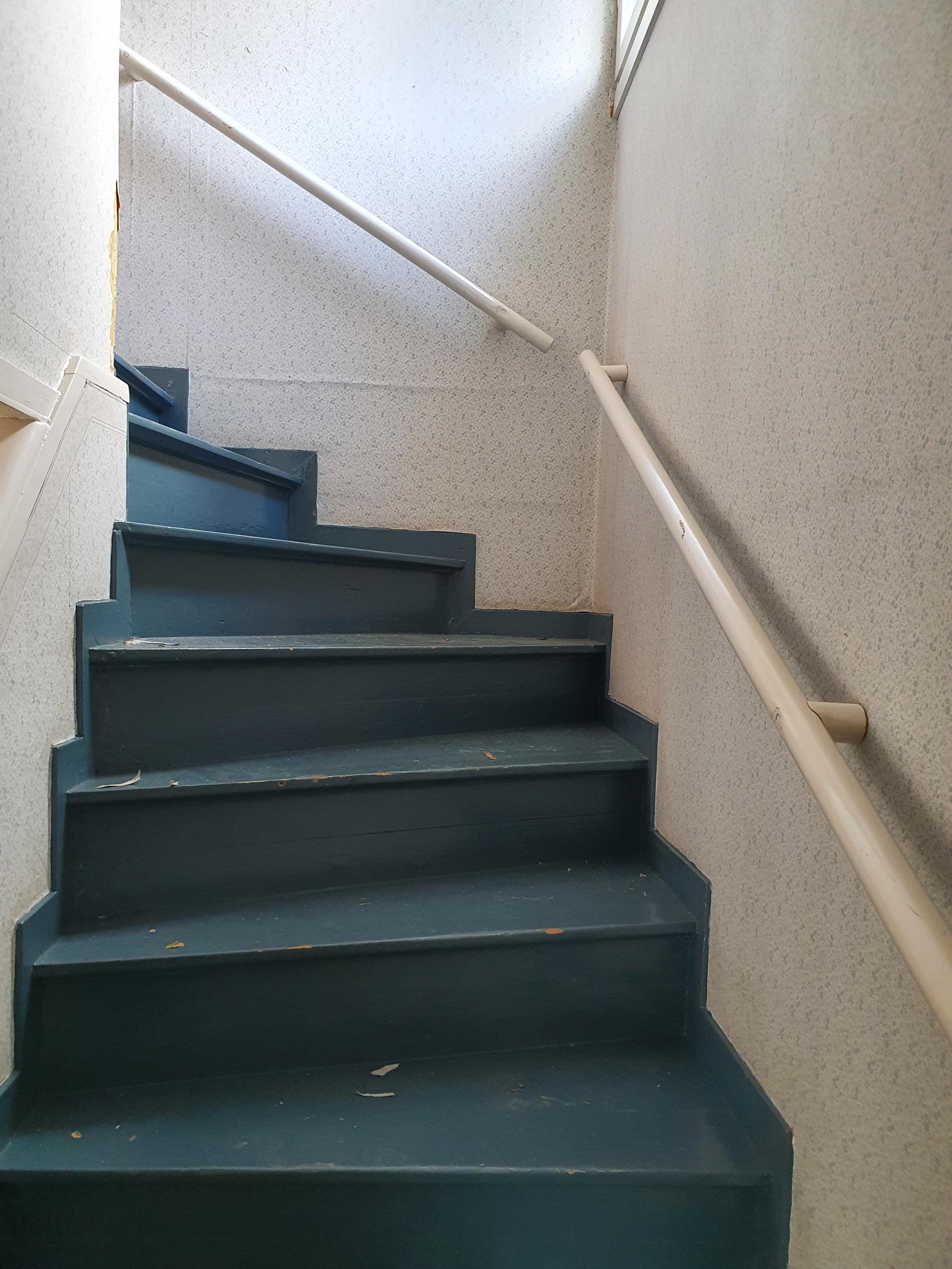
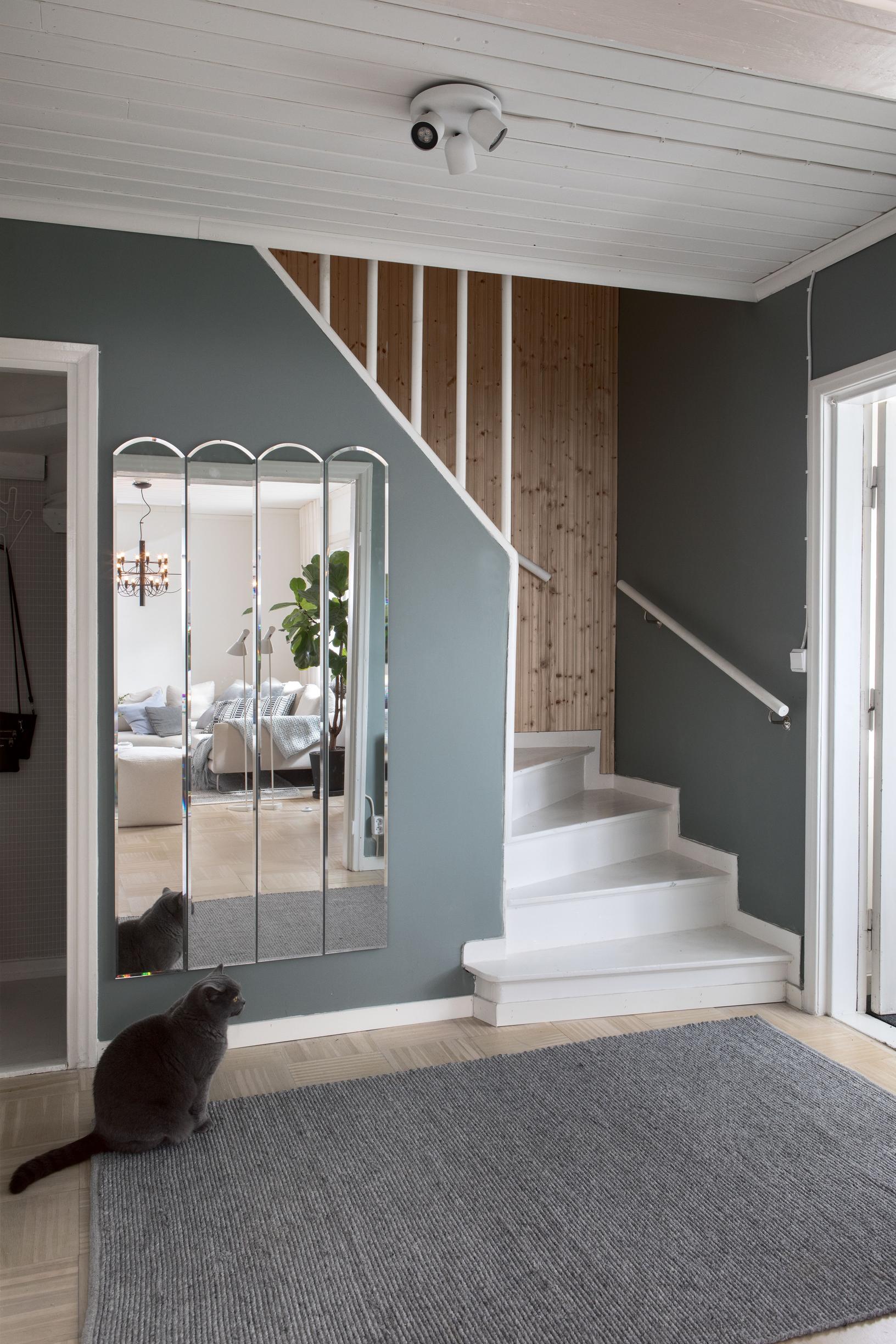
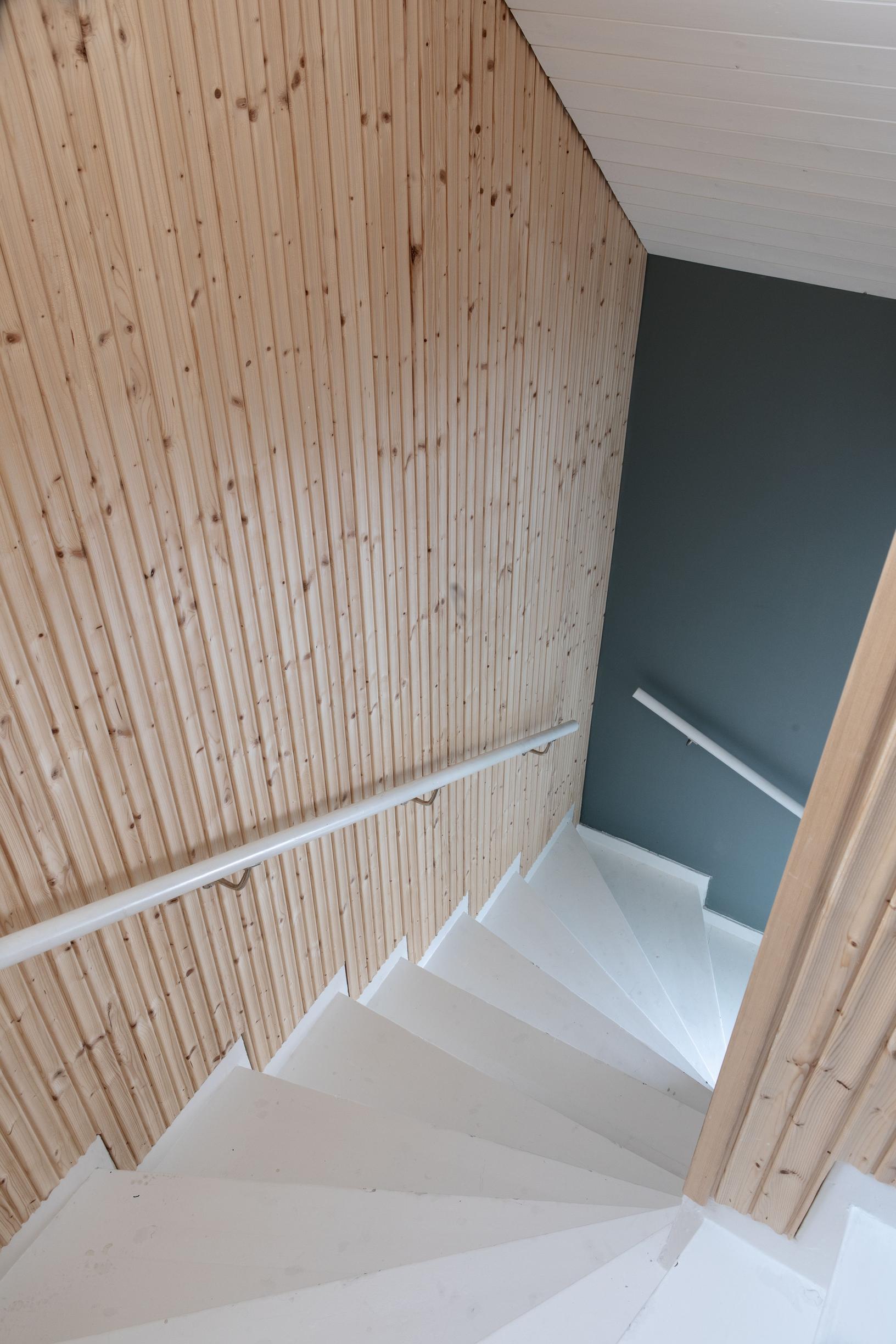
The renovation first began in October 2020, and by January 2021, just about everything was ready when they moved into their new home.
“For us, the pandemic era went by quite nicely while renovating our new home,” Outi recalls.
There was work to be done in every room. In the living room, some of the wallpaper was scraped off, and some was skim coated.
“Over the decades, the smell of an old house had seeped into the materials, but it left along with the wallpaper.”
The walls were skim coated with gypsum compound, preserving the breathability of the structure.
“We didn’t want new wallpaper, so we used a plastic-free paint on the walls instead.”
The parquet floor in the living room, entryway, and the bedroom-to-be had turned yellow over time.
“The floor had been done properly back in the day, so we decided to sand and re-lacquer it.”
They wanted the ash parquet floor to have a translucent light color.
“After sanding, we applied a white-tinted lacquer, which contained white pigment. We played a bit of a parquet puzzle when the doorway between the living room and entryway was widened. The standard-sized doorway nearly doubled in width to about 150 centimeters. We got the missing parquet pieces from an upstairs room, where we installed a plank floor.”
The panels on the living room ceiling were replaced with paneling, which was then painted with panel paint.
“Widening the doorway gave a more spacious look. The entryway used to be somewhat dark, and now it’s brighter, too.”
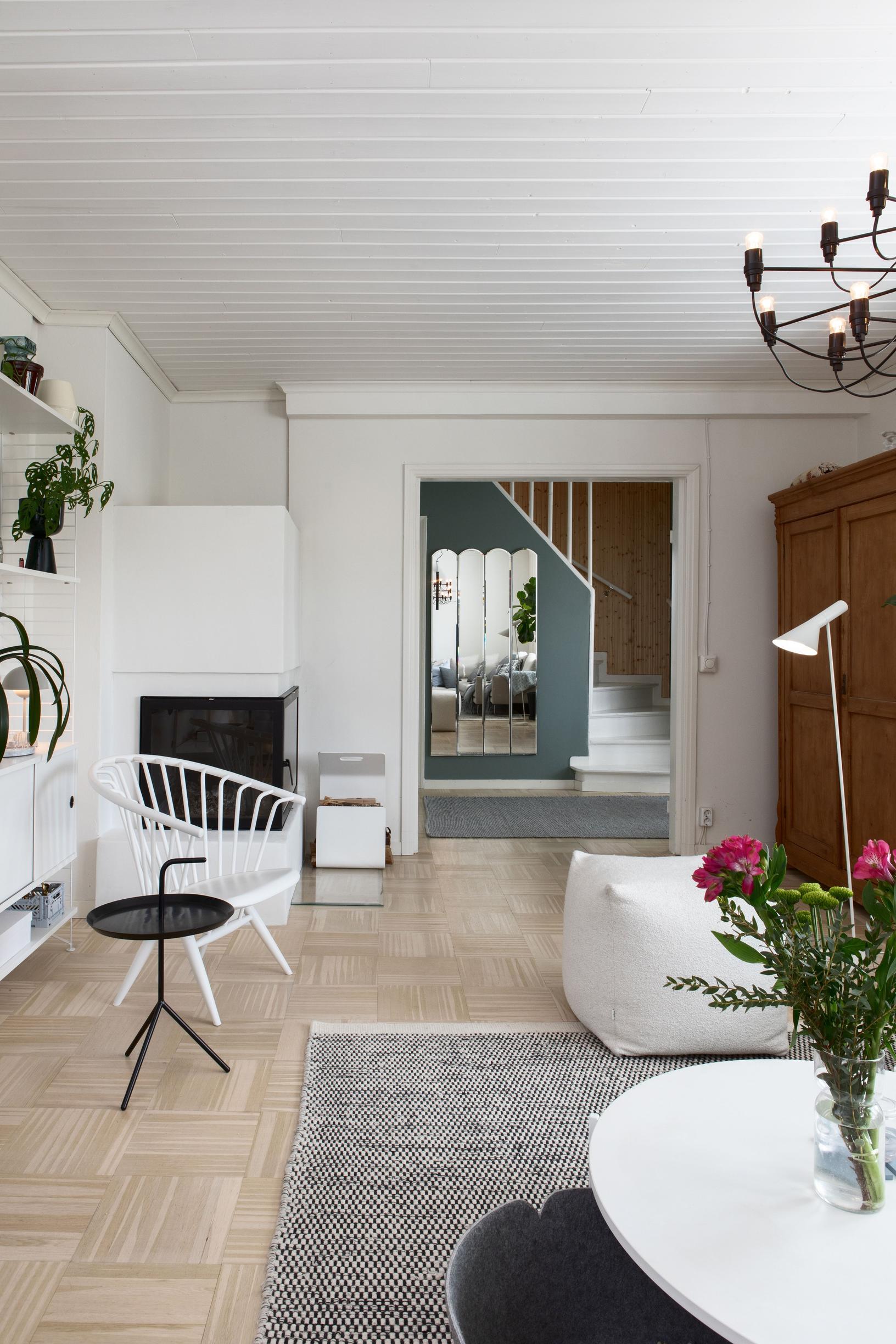
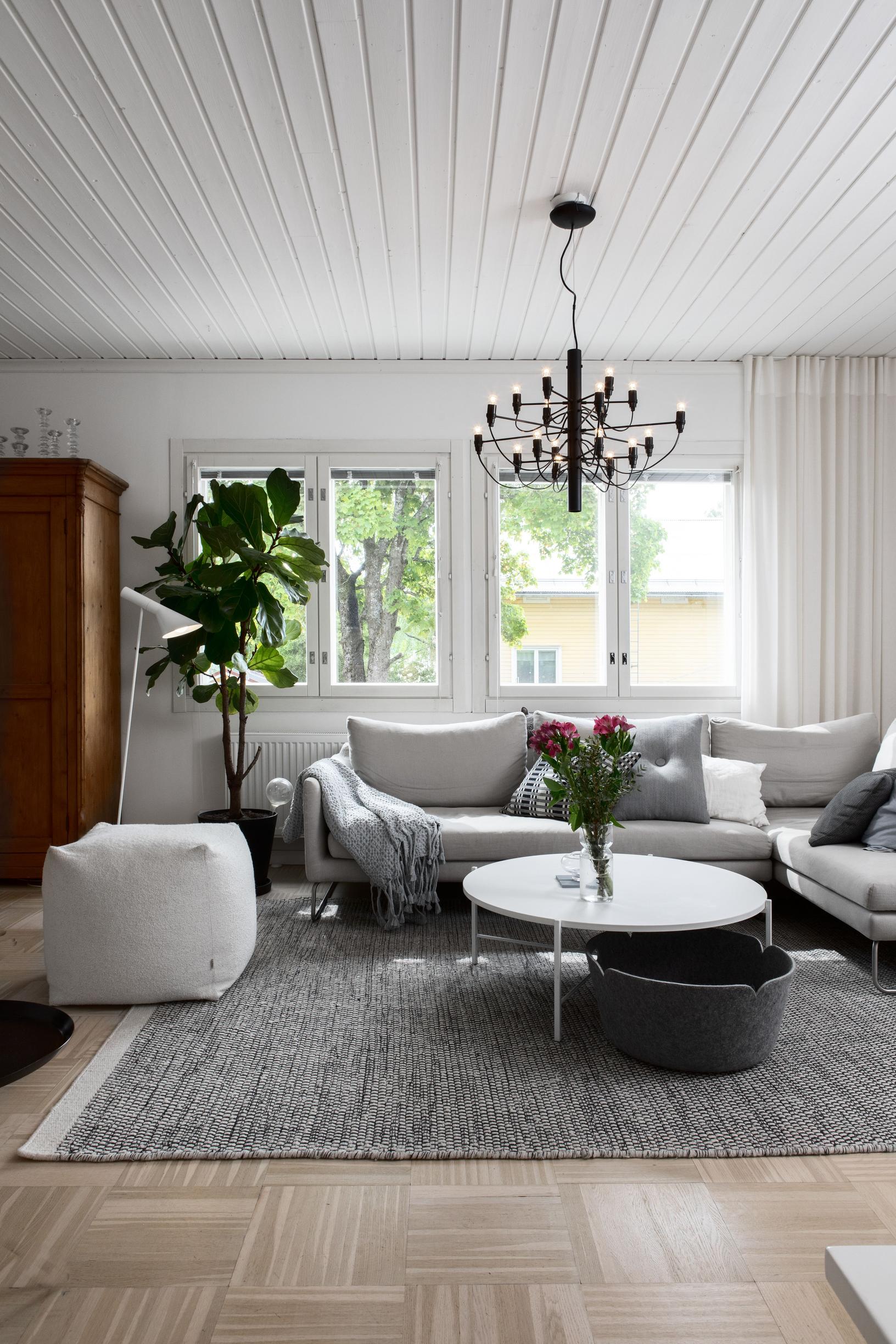
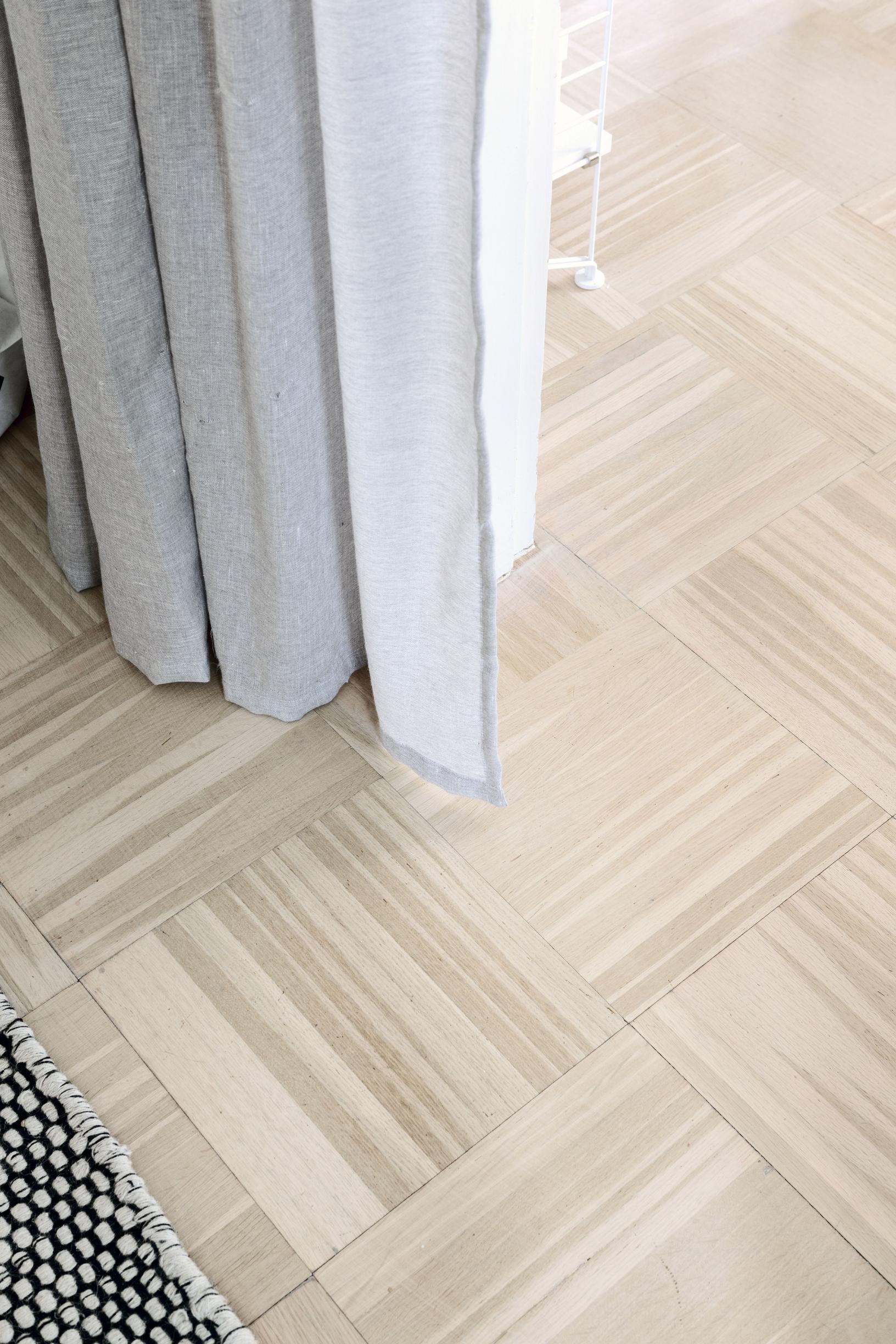
in the kitchen, they dove beneath the surface. The water and sewer pipes had been replaced by the previous owners.
“Under the kitchen’s vinyl flooring, we found rough planks and the subfloor for a wood-burning stove that had once stood by the bedroom door,” Outi says.
Bringing back the wood-burning stove remained just a dream. There simply wasn’t enough room for it in the efficiently planned kitchen. A new pine plank floor was installed in the kitchen and then painted.
“We installed new floors in the two upstairs bedrooms with the same lumber, replacing the creaky plank parquet. Those floors were treated with lye and scrubbed with soap,” Outi explains.
All the kitchen functions were placed along the same wall, with only the refrigerator was set apart. Opposite it, there was enough space for a breakfast cabinet.
“I like having everything neat and out of sight,” Outi says.
Outi’s sister puts it a bit differently.
“Tanja thinks a home can look lived-in. I’d rather it didn’t,” Outi laughs.
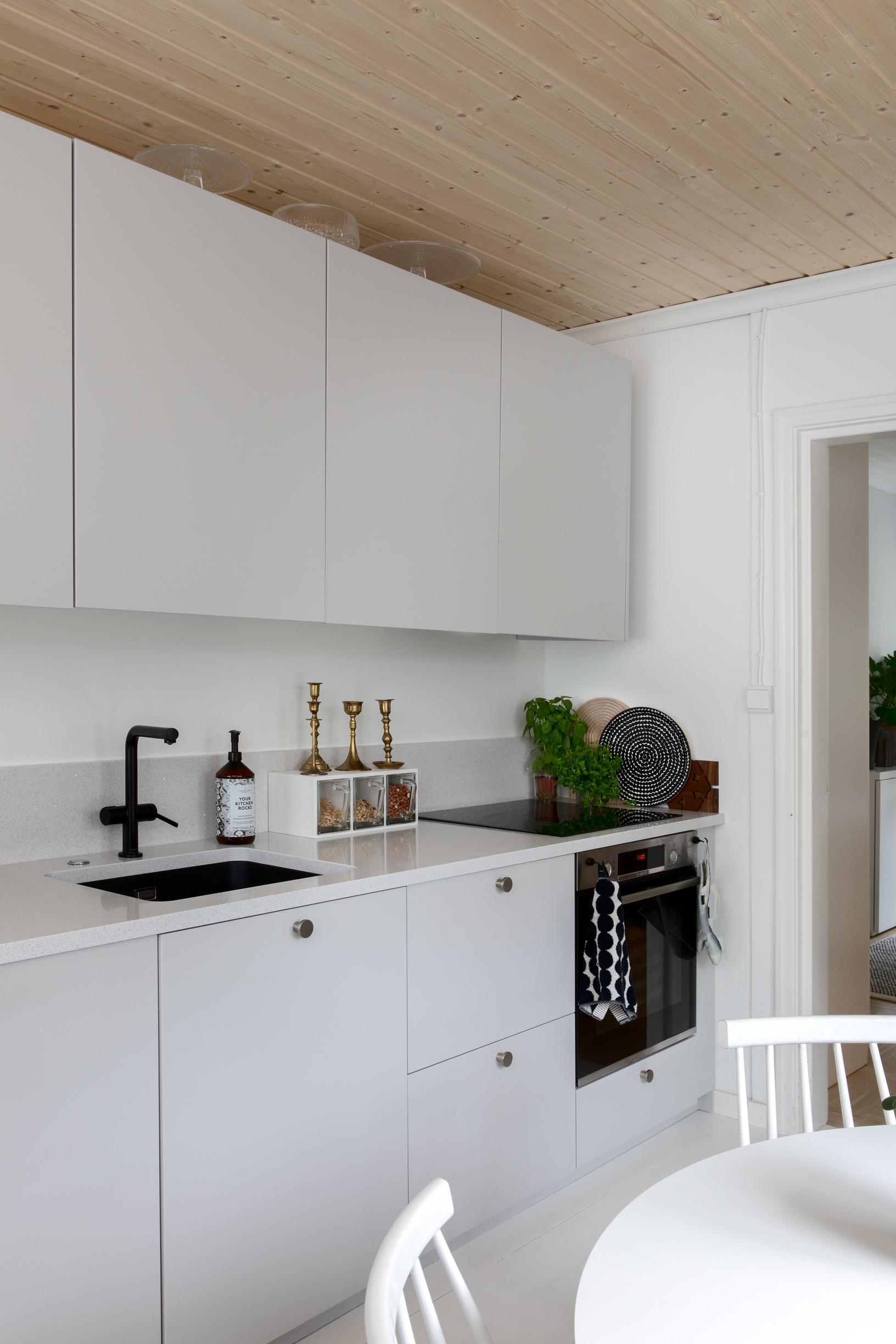
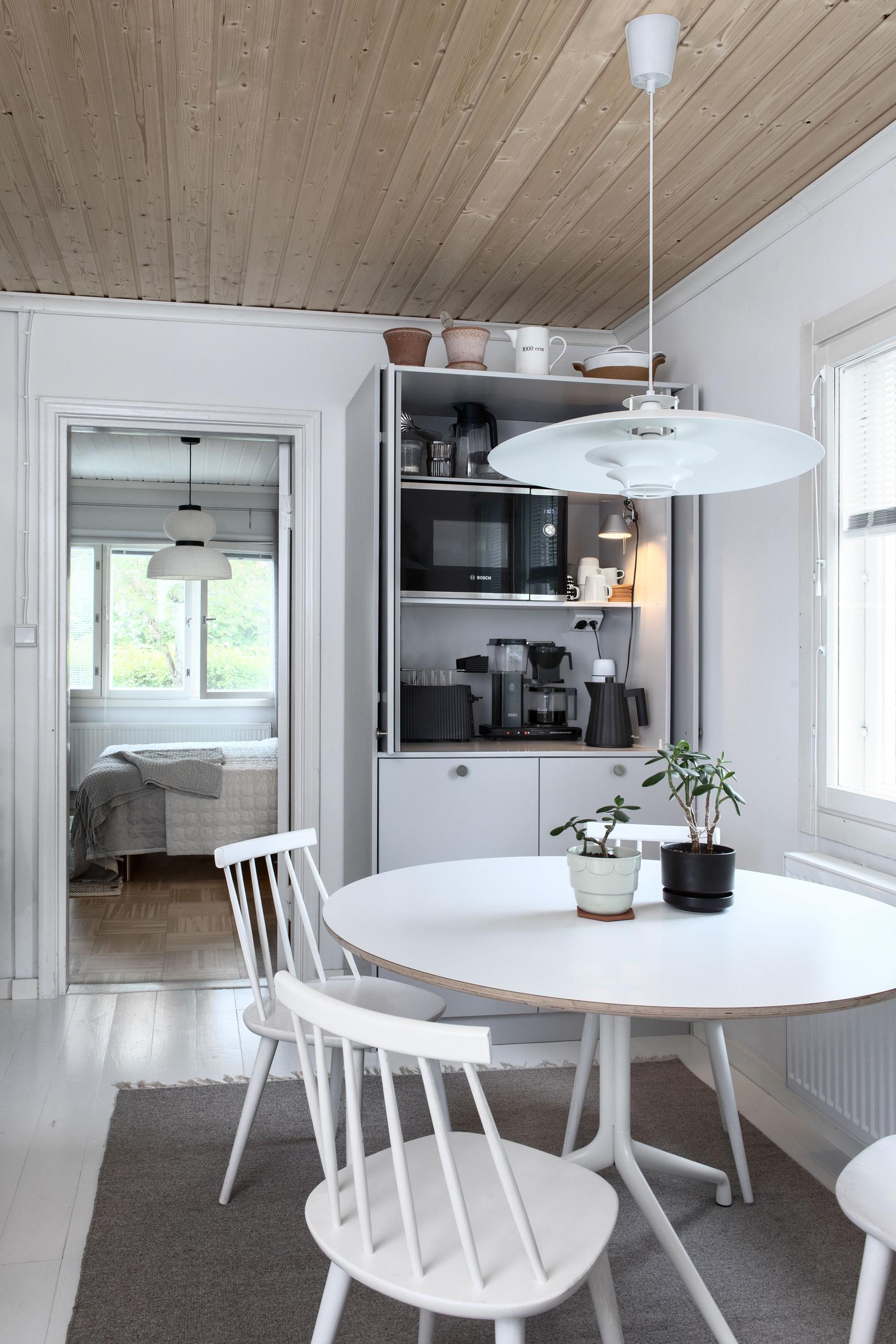
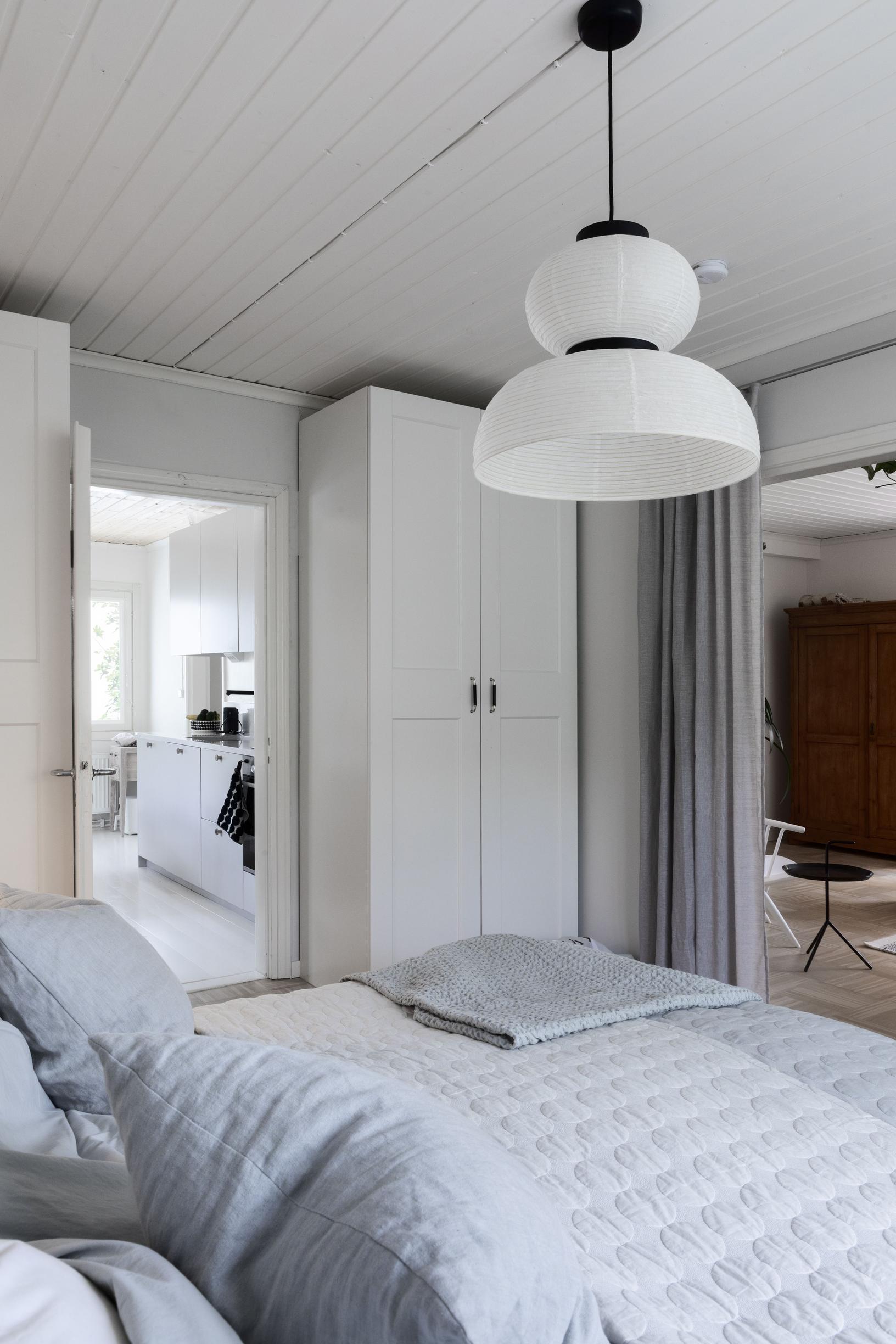
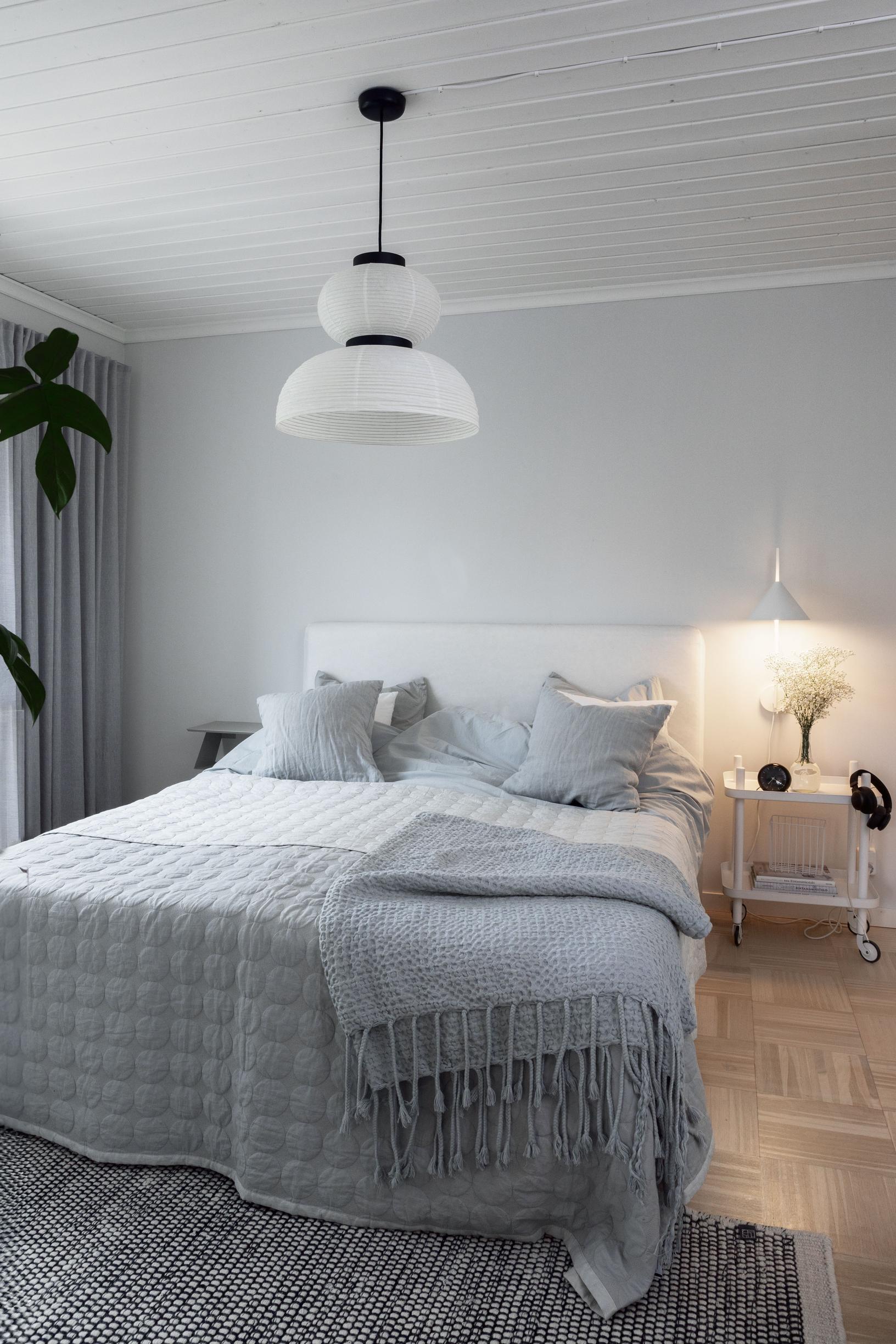
old basements can inspire a kind of fearful awe in some homebuyers.
“During the inspection, nothing unusual was found in the basement or anywhere else. The house had been with the same owner from the start and was well cared for,” Outi explains.
The fireplace room in the middle of the basement level got an updated look with clay plaster.
“Clay is a breathable material that can be applied directly onto concrete,” she says.
No plastic paint should be used on the concrete surface, as it would block adhesion and keep the surface from breathing.
Downstairs, one wall was removed; its lower portion was a concrete cast that was chiseled away. Epoxy was recommended for the floor, and clay was recommended for the walls. Thanks to its properties, clay is ideal for many old basements.
A space for laundry was also planned along one wall of the fireplace room.
“The sauna and washroom were completely redone. The old floor was chiseled out, and Styrofoam and Leca gravel were placed underneath, then a new concrete slab was poured on top.”
Underfloor heating will help keep the structure dry in the future.
“We installed electric underfloor heating. We also added a toilet to the washroom. Now we have a toilet on every floor. That’s real comfort,” Outi says.
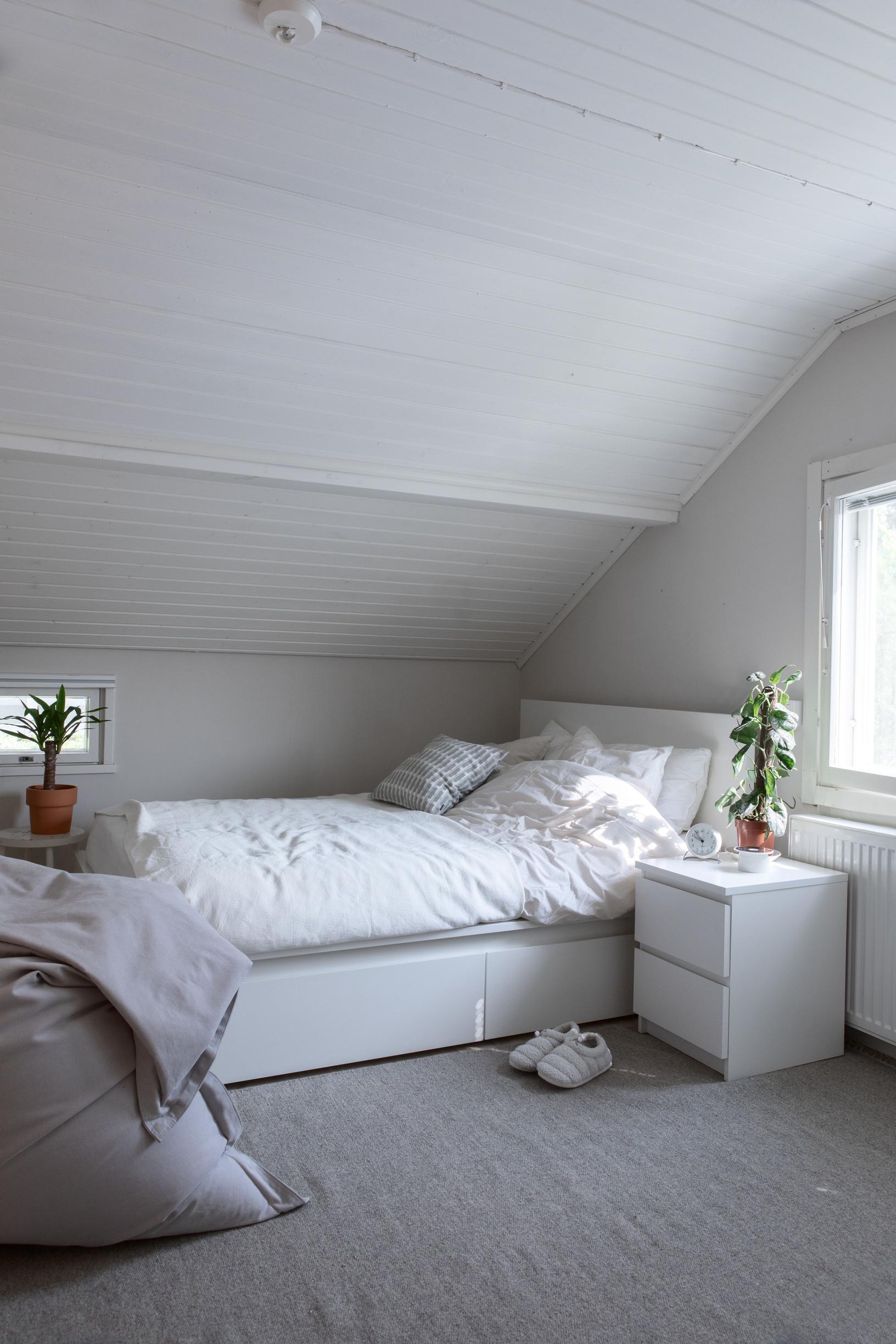
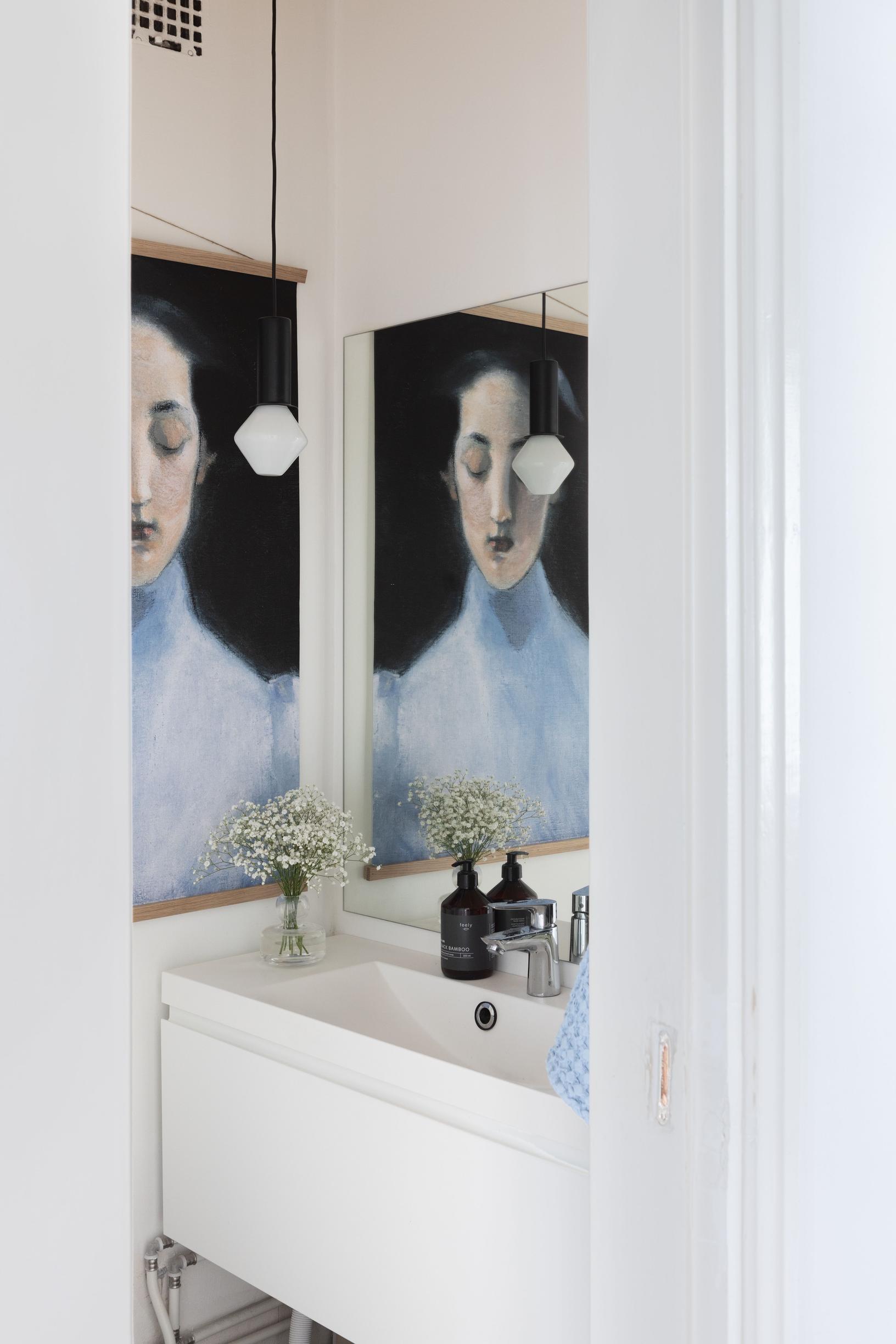
A familiar friend sits on the back of the living room sofa. Rokki the cat looks out the window from its favorite spot. For Outi, moving near the Malmi neighborhood was a return to her childhood surroundings.
“Many of my school friends lived in this area. I’ve known these yards and houses since those days,” she says.
Moving to a single-family home has been the right decision for the family.
“Having our own house and yard offers an endless list of little things to do. Next up, I might go water the garden,” Outi says.
